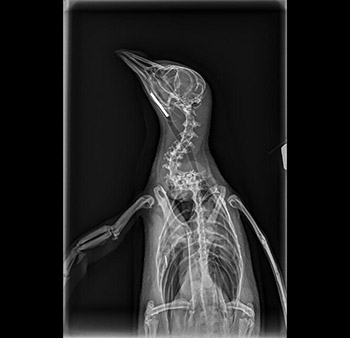Our anaesthesia team have had a clinical paper published on general anaesthesia in little blue penguins for MRI, the first time such research has been made available.
There have been no previous descriptions of such a procedure and the paper comes on the back of the team performing the world’s first reported MRI scan on a little blue penguin, also known as a fairy penguin.

The clinical paper, which has been published after peer review, is entitled: “Anaesthesia of a little blue penguin (Eudyptula minor) for magnetic resonance imaging.”
Anaesthesia Clinician Erica Daly prepared the manuscript, which was reviewed by Head of Specialist Services William McFadzean and Clinical Anaesthetist Phillipa Tucker.
The MRI images themselves were unremarkable and did not support a definitive diagnosis but did help to exclude some important differential diagnoses.
Phillipa said: “There is no previous report of anaesthesia of a little blue penguin for magnetic resonance imaging, and more widely, anaesthesia of little blue penguins is rarely reported in the literature.
“However, the demand for advanced imaging of exotic species is becoming more common with wider availability, meaning a need for suitable anaesthetic protocols.
“While this clinical paper highlights how the anaesthesia team at Cave can handle challenging cases, it’s been written to support the wider veterinary community.”
Due to its pioneering nature, the anaesthesia procedure of the little blue penguin meant the team had to be very cautious with their approach.
Phillipa added: “Preparation and planning beforehand are of the utmost importance, especially as limited reported drug data can present challenges.
“This particular case is significant as it describes one anaesthetic protocol, highlights possible issues that may be encountered and suggests improvements that should be considered with future cases.”
You can read the full clinical paper here:
https://bvajournals.onlinelibrary.wiley.com/doi/full/10.1002/vrc2.743




